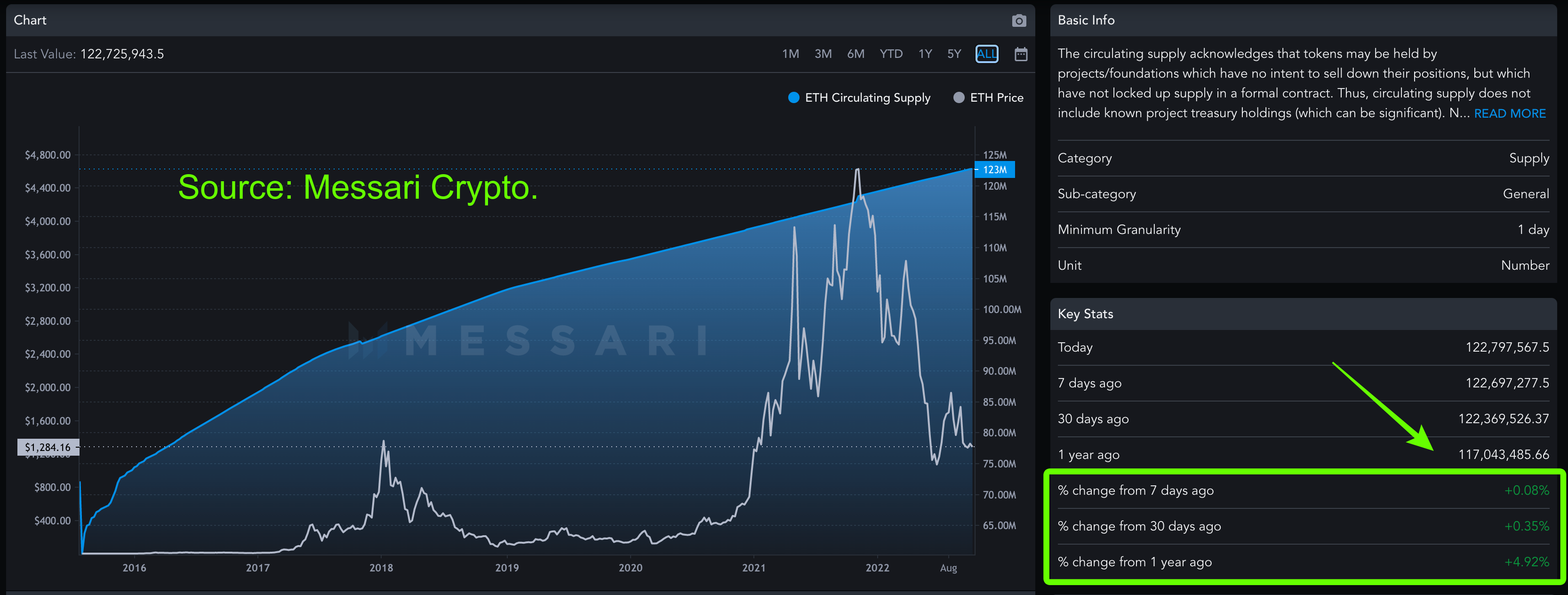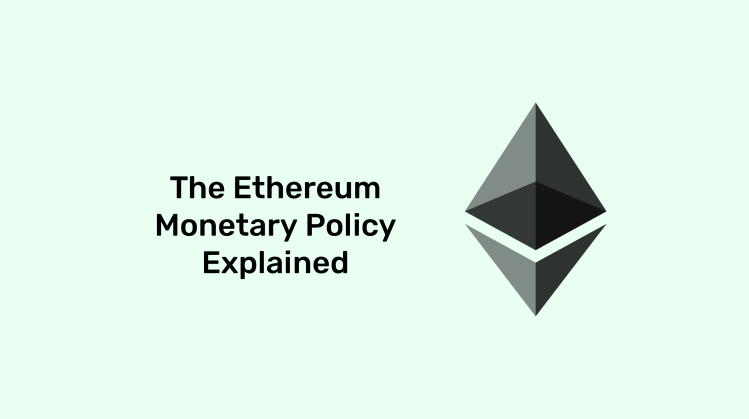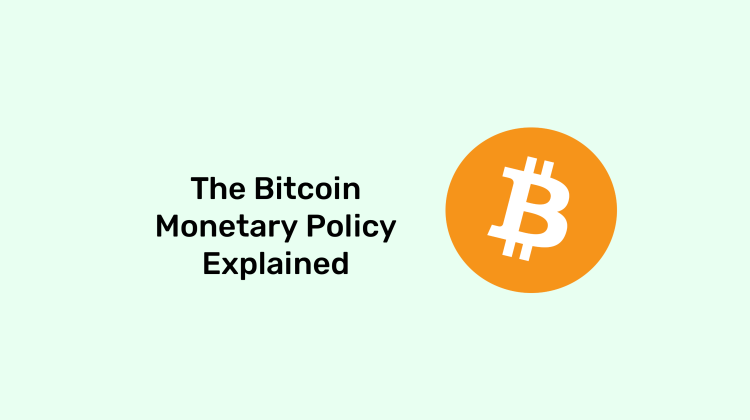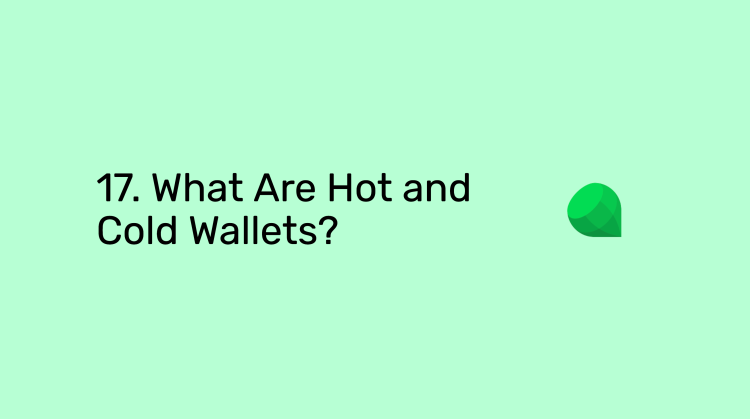How the Ethereum supply works.
You can watch this educational content here:
Ethereum’s monetary policy depends on four variables:
The premine
The block reward for miners or stakers
Base fees
The frequency of blocks
What Is the Premine?
The Ethereum network was ideated and invented by Vitalik Buterin in late 2013. Then, Vitalik and his co-founders did a crowdsale or presale of ETH tokens in 2014 to raise money for 18 months of development.
This presale amounted to 60 million ETH. Additionally, they issued 12 million ETH for the founders and developers themselves. All this means that 72 million ETH were issued in the first block.
What Are the Block Rewards for Miners or Stakers?
For the first seven years of its existence, Ethereum was a proof of work blockchain so it had miners that got paid in block rewards for producing blocks.
Starting in September of 2022, Ethereum migrated to proof of stake so now the block rewards are paid to stakers for producing blocks.
What Is the Base Fee?
The base fee is the standard cost of the execution of the different types of operations in Ethereum. Since 2021, this standard fee is burned, which reduces the supply of ETH.
The other type of fee is the priority fee which is just like a tip that is paid to miners for including a new transaction, and this fee is not burned so it is not relevant for the monetary policy.
What Is the Frequency of Blocks?
The frequency of blocks is how much time passes between blocks, or how much time it takes to create each new block.
While it was a proof of work blockchain, Ethereum had a block time of 15 seconds. Since September of 2022. When it migrated to proof of stake, the block time was reduced to 12 seconds.
Changes to the Monetary Policy
After the 72,000,000 stock of ETH were created in the genesis block due to the premine and the payment to founders and developers, Ethereum had five monetary policies and supply schedules that we will explain in the next few slides.
1st Monetary Policy
The first monetary policy was a perpetual 5 ETH reward per block to miners and this lasted from block 0 to block 4,369,999.
2nd Monetary Policy
Then, from block 4,370,000 to block 7,280,000 the miner reward was arbitrarily lowered to 3 ETH per block.
3rd Monetary Policy
Then, from block 7,280,001 to block 12,965,000 the reward per block to miners was arbitrarily reduced to 2 ETH per block.
4th Monetary Policy
On block 12,965,000 the reward per block to miners was kept the same, but the fee model was changed. This is where the fee was separated into a base fee and a priority fee or “tip” for miners.
Because the base fee is burned, then this new system modified the supply of ETH.
5th Monetary Policy
When Ethereum migrated from proof of work to proof of stake, yet another change to block rewards happened. The fee system was kept the same.
The new block rewards model is a system of rewards and penalties based on the amount of ETH that is staked in the system.
What Is the Annual Inflation of ETH?
As seen in the chart below, the annual inflation or issuance of ETH has been stable since the network was created, and in the last year it was 4.92%.

Since the migration to proof of stake in 2022 it is expected that this will be lower, but it has been still running at 4% since the migration.
How Many ETH Will There Ever Exist?
Because the Ethereum network ecosystem has changed the monetary policy several times and it has always had a perpetual rewards for miners and now for stakers, it is not known if there is ever going to be a capped or maximum supply of ETH as is the case with Bitcoin and Ethereum Classic.
Thank you for reading this educational post!
Please remember to download Emerald here:



